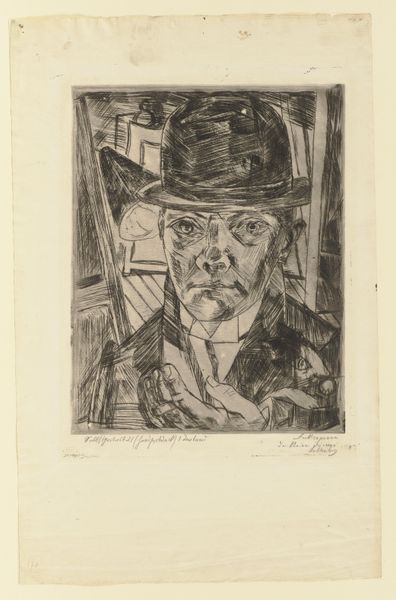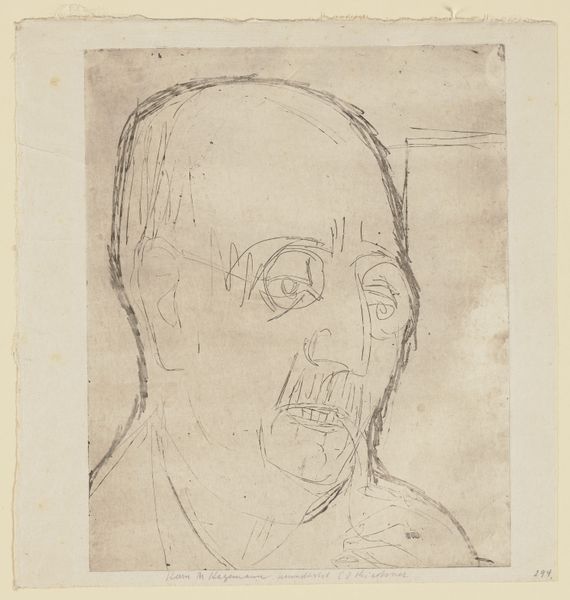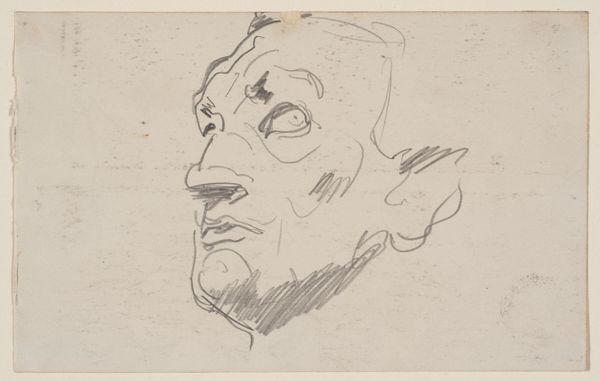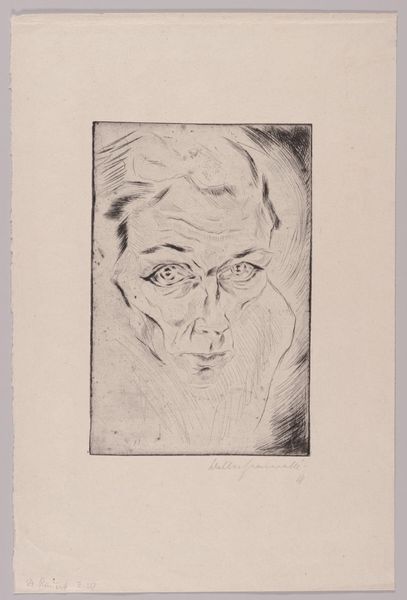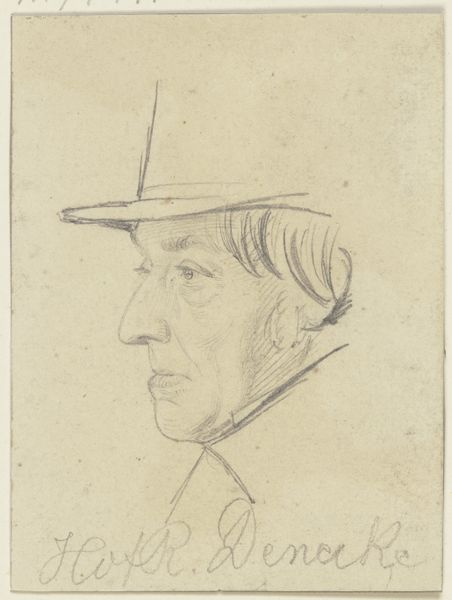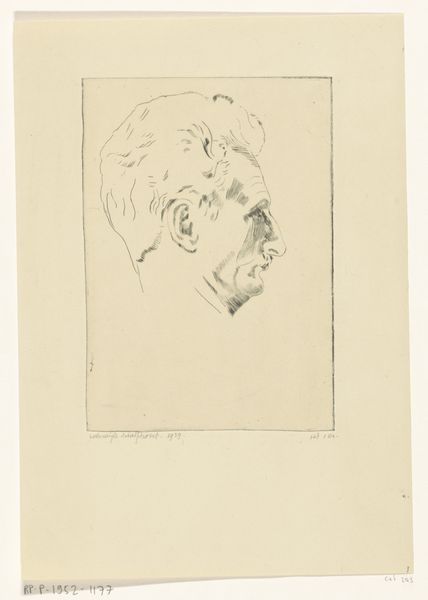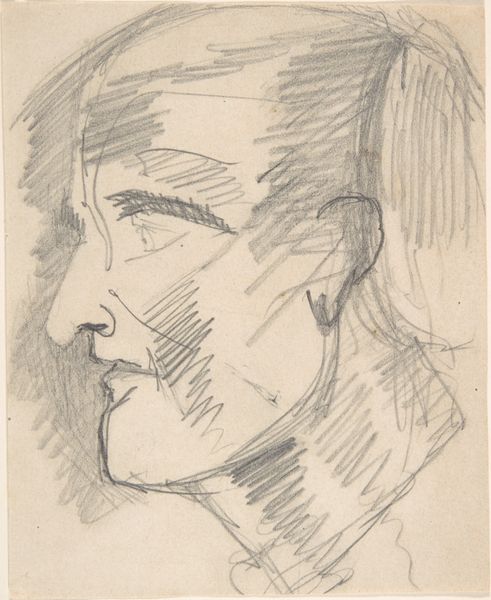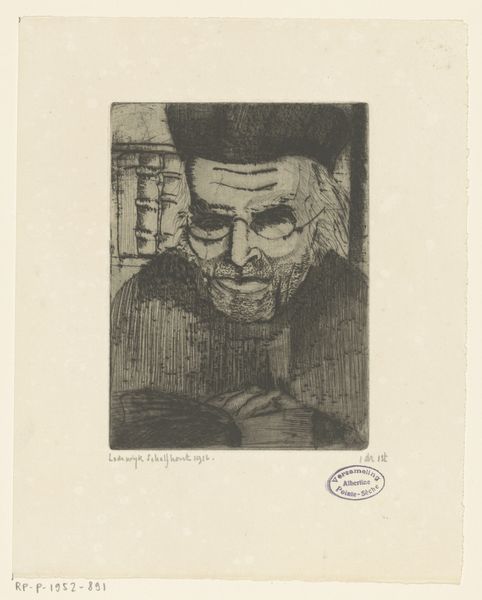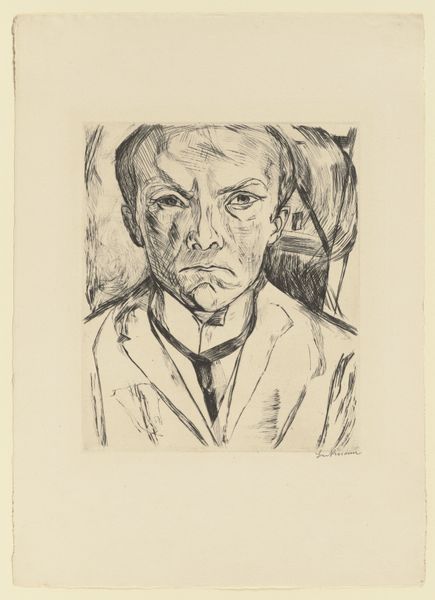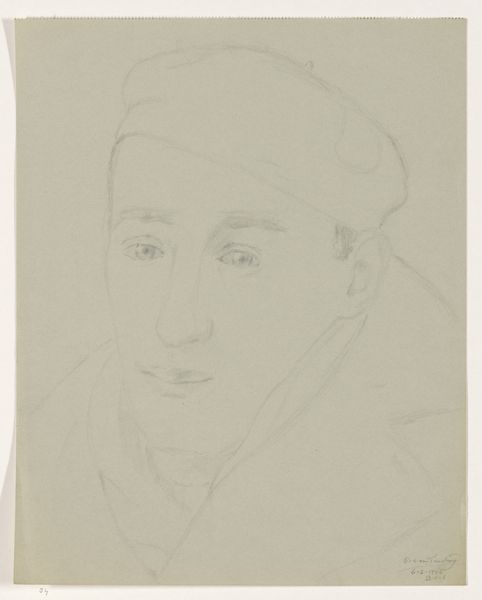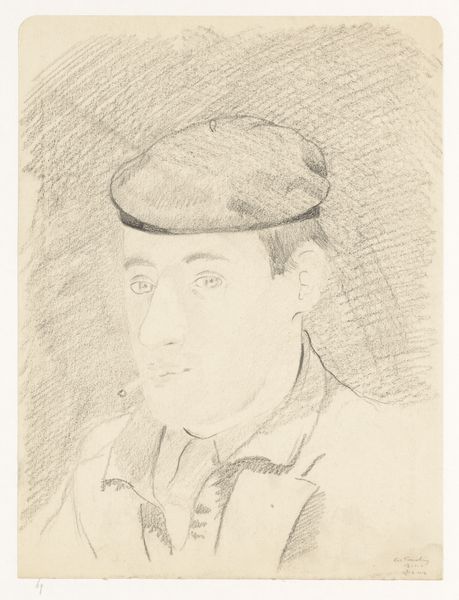
drawing, print, etching, paper
#
portrait
#
drawing
# print
#
etching
#
german-expressionism
#
paper
#
expressionism
Copyright: Public Domain
Editor: Here we have Ernst Ludwig Kirchner's 1920 etching, "Kopf Dr. E. Grisebach," or "Head of Dr. E. Grisebach." It’s a striking portrait, and the stark lines and shading create a really intense, almost troubled mood. How do you interpret this work? Curator: Well, let’s consider the social and political context. This was created shortly after World War I, a period of immense trauma and societal upheaval in Germany. Look at the sharp, angular lines – do they perhaps reflect a sense of anxiety, a fracturing of the self that mirrors the collective experience of the time? The German Expressionists, including Kirchner, often used art to critique and question bourgeois society and explore trauma after the war. Do you think that Expressionism fits here? Editor: I see that. The sitter's gaze seems almost accusatory, doesn't it? Perhaps directed at a society that failed so many. It also has me wondering if the class of the sitter – a “Dr.” – played a role in the artwork. Curator: Absolutely. The portrait can be interpreted as a broader statement on power, class, and the responsibility of the intellectual elite. Did they do enough to prevent the war? What role did they play in shaping the social landscape? Think of Kirchner's own struggles with mental health, too, perhaps reflecting how individuals felt burdened and disillusioned by the state of things. Editor: So, it's not just a portrait of an individual, but a reflection of the collective anxieties and societal critiques of the era? Curator: Precisely. Kirchner uses the individual to address broader cultural and political questions. It also becomes clear how art can both reflect and shape discourse during social turmoil. Editor: I never thought about the potential dialogue between class and the artist's state of mind before when looking at Kirchner. Curator: And seeing the artwork in relation to social turmoil illuminates aspects we might otherwise have missed.
Comments
No comments
Be the first to comment and join the conversation on the ultimate creative platform.
